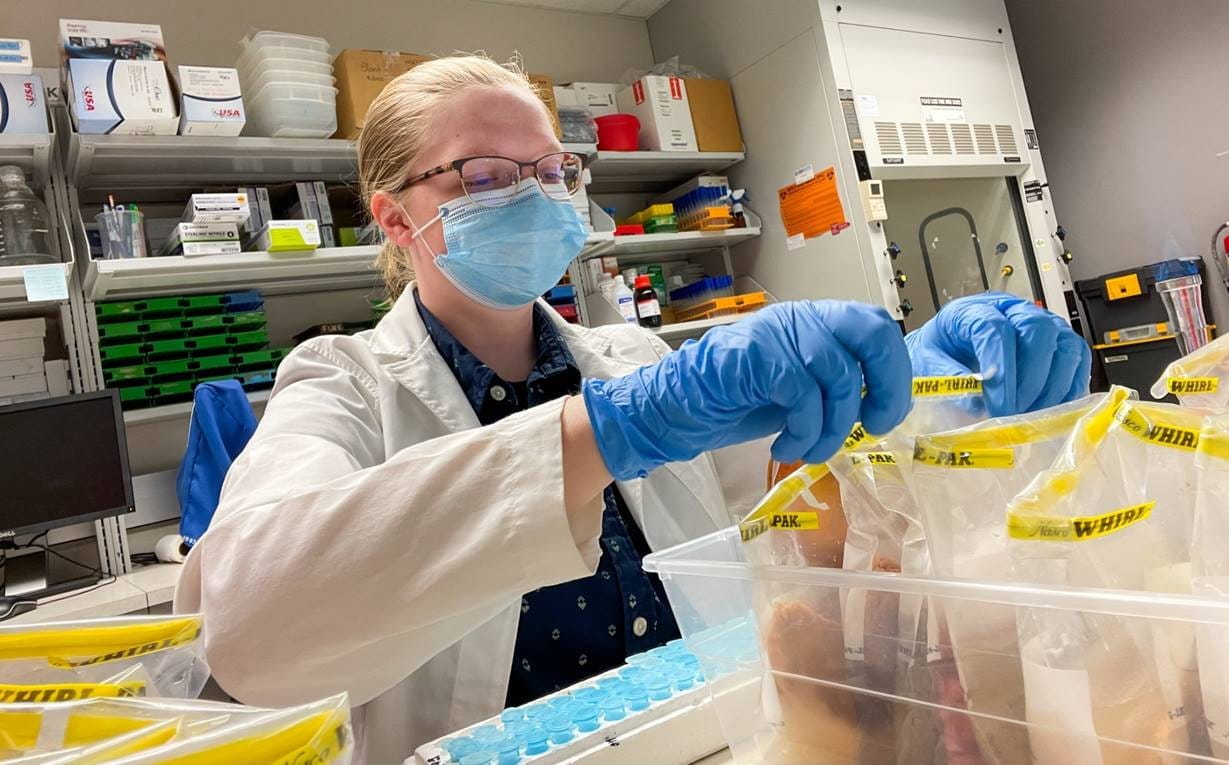November 30, 2021
COLUMBUS, Ohio – With the knowledge that human, animal and environmental health are intertwined, researchers at five of The Ohio State University’s colleges and its medical center are uniquely positioned to collaborate on a “one health” approach to battle antibiotic resistance and help prevent the next global health crisis.
Ohio State’s antimicrobial stewardship program (ASP) educates health care workers, veterinarians, students and patients on the appropriate and best use of antibiotics among people and animals. Experts from The Ohio State University Wexner Medical Center work with colleagues in Medicine, Veterinary Medicine, Pharmacy, Public Health and Food, Agricultural and Environmental Sciences through Ohio State’s Infectious Diseases Institute (IDI) to reduce antibiotic resistance. The United Nations Food and Agriculture Organization has designated Ohio State’s IDI as one of eight International Reference Centers worldwide for antimicrobial resistance.
“It’s easy for us just to focus on our own areas of research and our own interests and try to answer questions in that way. But we’ll have a much bigger impact by bringing diverse areas of expertise together to find solutions to the problem,” said Thomas Wittum, a professor and chair of the Department of Veterinary Preventive Medicine. 
Bacterial infections that would typically be treated with antibiotics are becoming more resistant to these medications, and bacteria evolve faster than new treatments can be developed, resulting in life-threatening illness. A key contributor to the global issue of antimicrobial resistance has been the long history of overprescribing antibiotics for human and animal viral illnesses that they’re ineffective in treating.
Researchers with the ASP stress the importance of using the antibiotics we have today in a way that helps maintain their effectiveness into the future, while developing new antibiotic alternatives. The ASP works closely with clinicians on guidelines, policies and formulary recommendations to identify the best antimicrobial treatment for infections while ensuring appropriate use considering cost, toxicity and concern for resistance development.
“The more you show your cards to the bacteria, the easier it is for them to practice getting around that drug,” said Erica Reed, the lead specialty practice pharmacist in infectious diseases at the Ohio State Wexner Medical Center. “We’re already seeing patients with life-threatening infections that we have very few effective drugs left to treat.”
Ohio State’s comprehensive, multidisciplinary approach examines the many ways antibiotic-resistant bacteria can spread, whether it’s between people and animals or through waterways to livestock that may then infect the food supply. A discovery nearly a decade ago by Ohio State veterinary researchers led to changes in disinfection practices worldwide in environments ranging from hospital rooms to pig farms. The researchers identified microbes that, after becoming tolerant to specific disinfectants, would automatically become resistant to a wide range of antibiotics.
“Whether it’s in the rivers, the wastewater treatment plant, the veterinary clinic or the medical center, all play a role in the problem, and all have potential contributions to the solution,” Wittum said.
In 2018, the College of Veterinary Medicine started its own comprehensive antimicrobial stewardship program to help veterinarians and students confidently make judicious antimicrobial use decisions while providing the best care for their animal patients. Next, experts hope to modify the program to apply it in private veterinary practices around the state.
Reed said the COVID-19 pandemic highlighted the importance of managing infections properly on a global level. She sees the need for stewardship networks among global partners to help prevent dangerous future infections.
Contact: Allison Burke, College of Veterinary Medicine Media Relations, Burk.113@osu.edu
###
